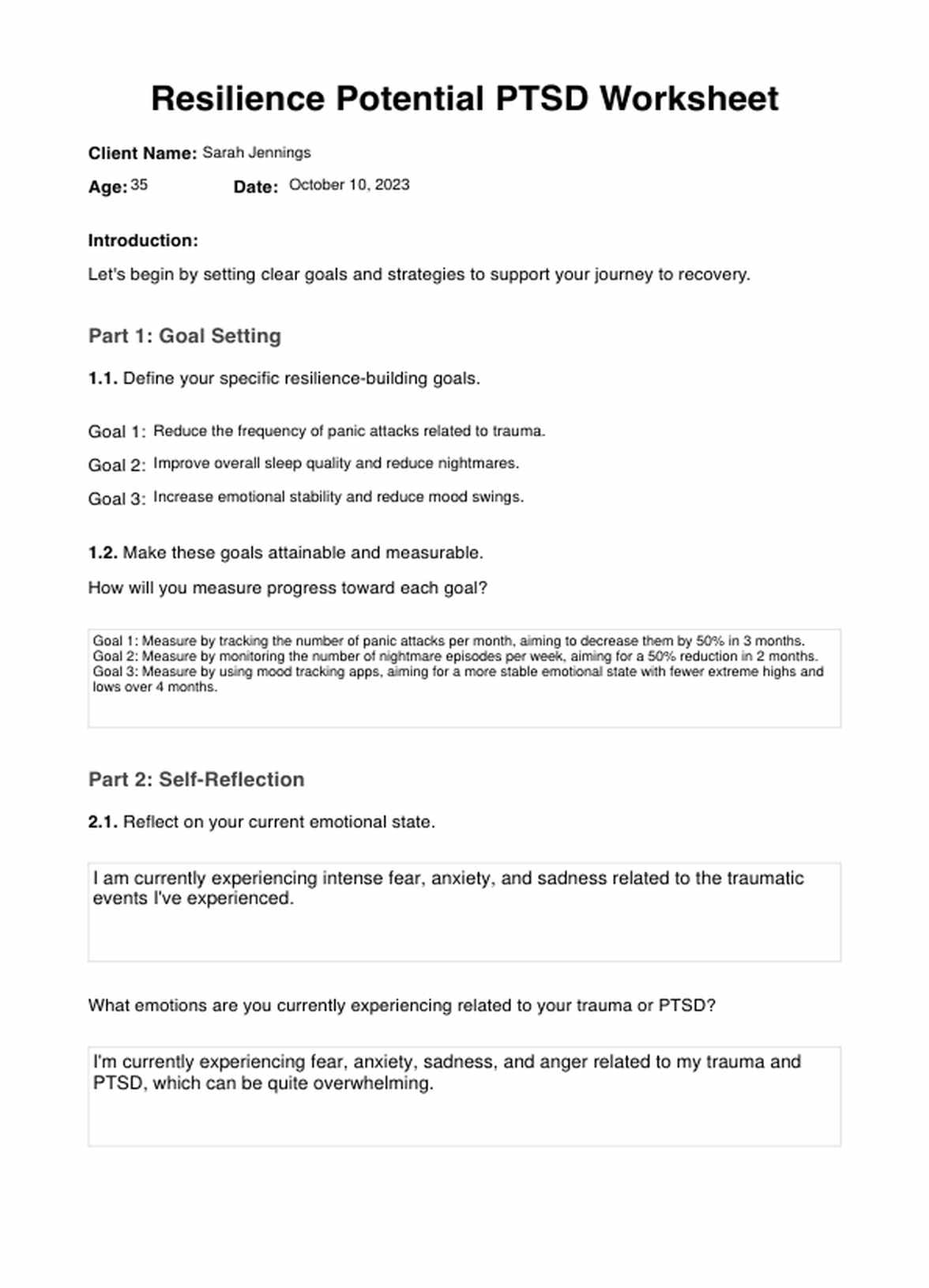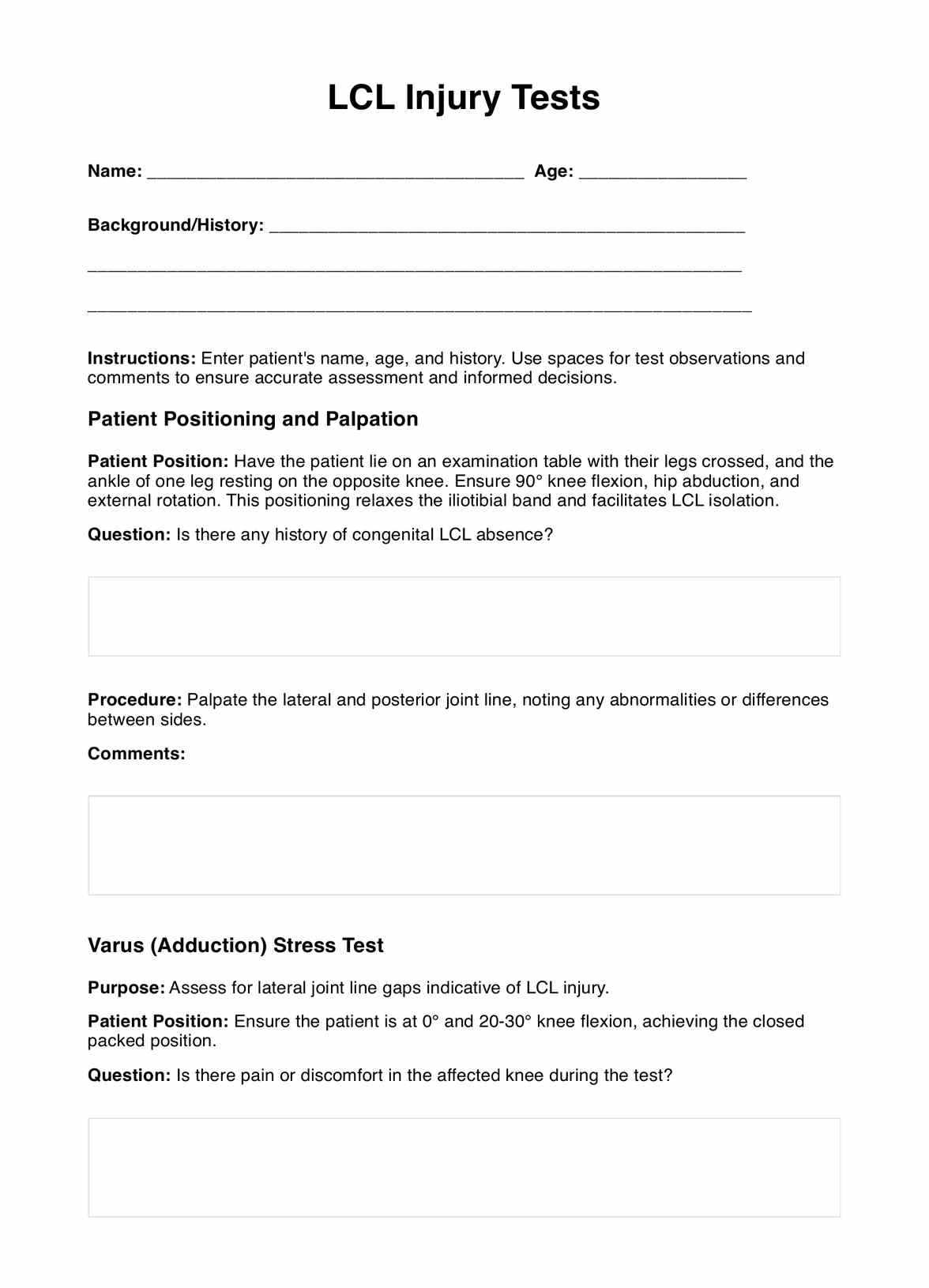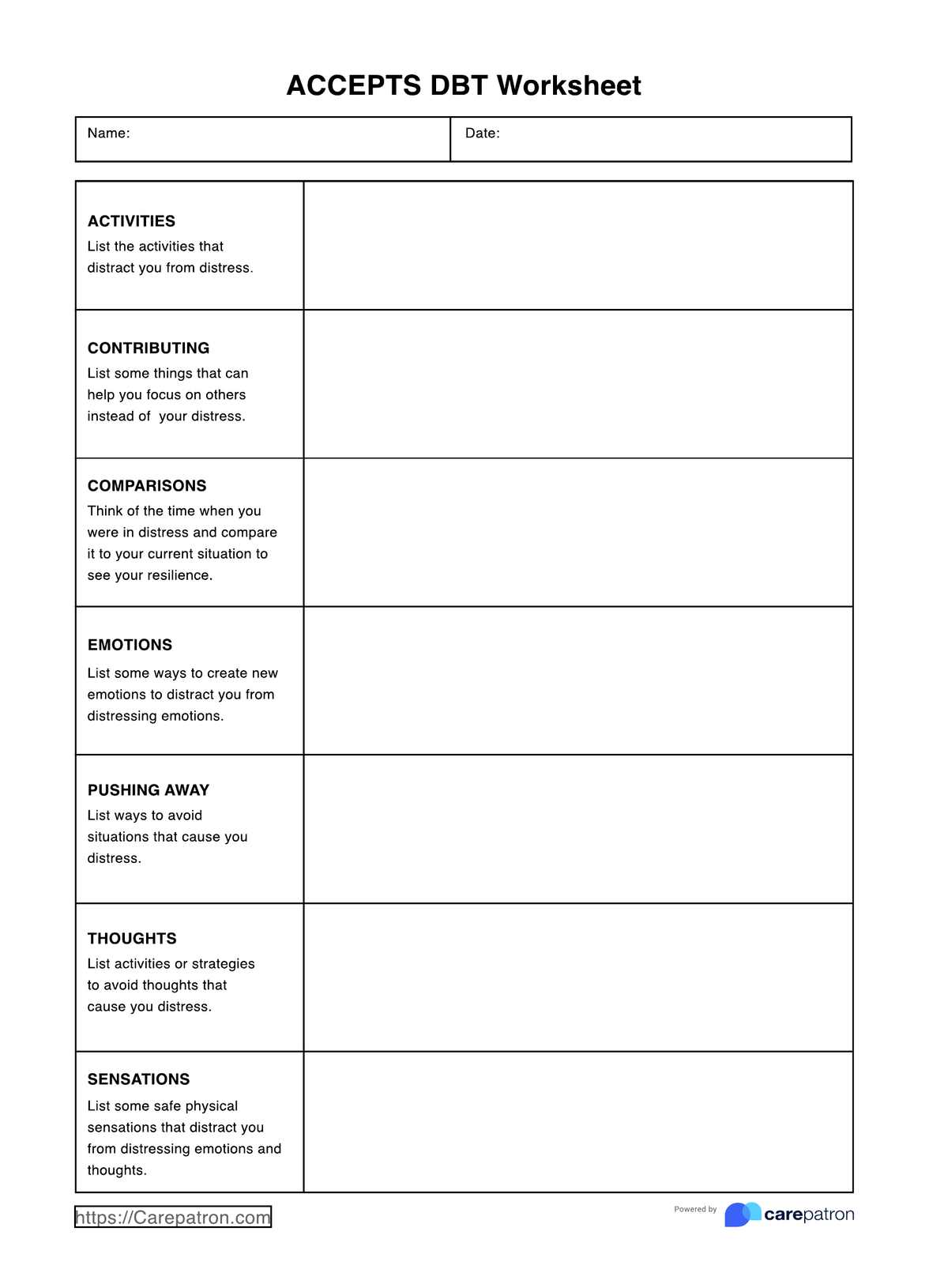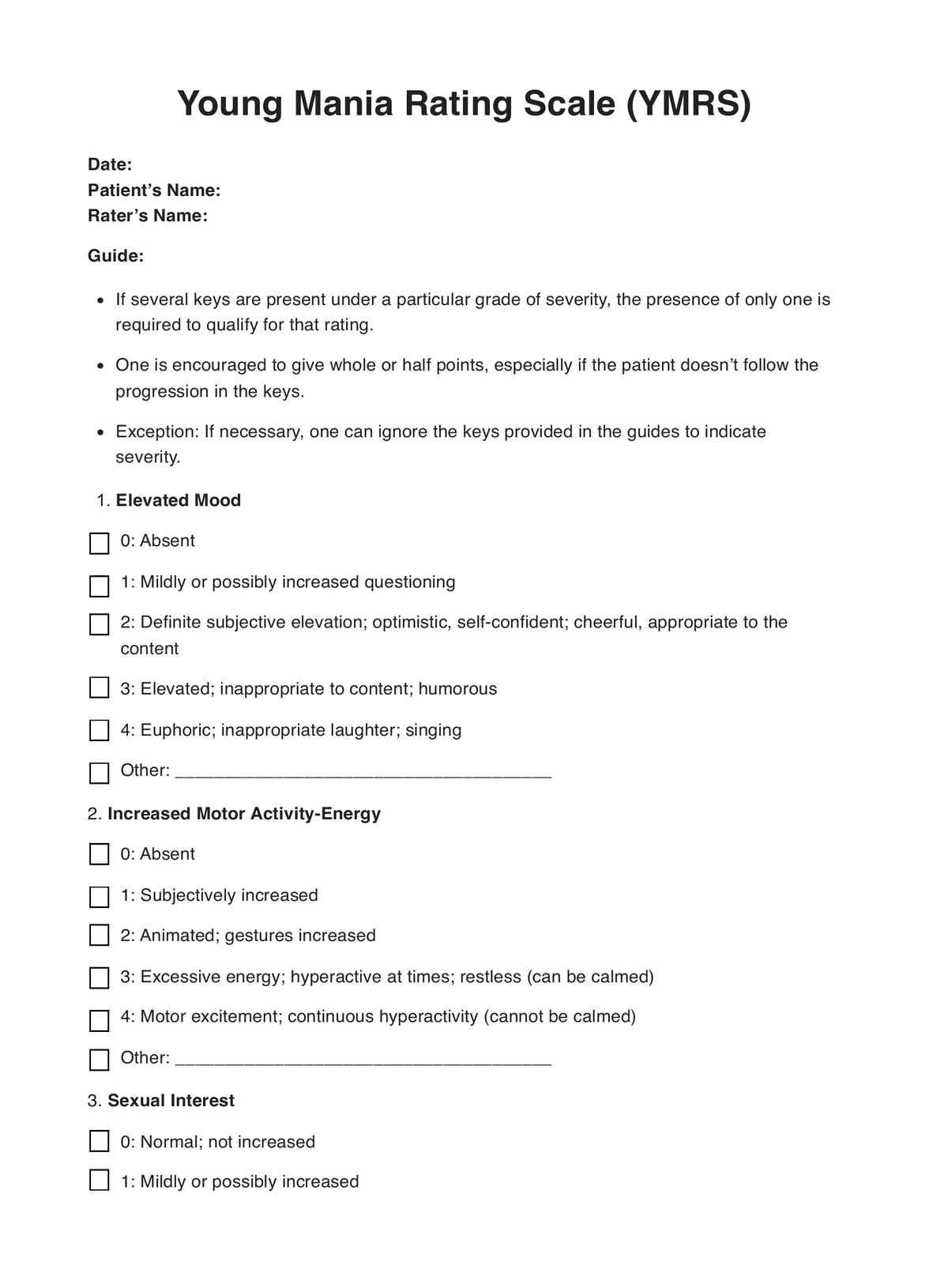Resilience Potential PTSD Worksheet
A comprehensive Resilience Potential PTSD Worksheet designed to aid practitioners in helping clients with PTSD. Download the free PDF now!


What are Trauma and PTSD?
Trauma encompasses distressing events that overwhelm an individual's ability to cope effectively, spanning experiences like physical harm, emotional abuse, natural disasters, and more. It challenges one's sense of safety and self. Post-Traumatic Stress Disorder, or PTSD, often follows trauma, causing ongoing symptoms like flashbacks, nightmares, severe anxiety, avoidance behaviors, negative mood changes, and hyperarousal.
Resilience, a key factor in trauma recovery, helps individuals bounce back from adversity. It encompasses emotional regulation, social support, cognitive flexibility, and positive coping strategies. Resilience acts as a shield against the development of PTSD by enabling better coping with traumatic experiences, reducing their long-term impact.
Enhancing resilience is vital for trauma survivors and those at risk of PTSD. It involves building emotional strength, nurturing supportive relationships, adapting thinking patterns, and adopting healthy coping mechanisms. By cultivating resilience, individuals can better navigate the challenges trauma presents, gradually regaining control and well-being and reducing the risk of PTSD.
Resilience Potential PTSD Worksheet Template
Resilience Potential PTSD Worksheet Example
How to use the Resilience Potential PTSD Worksheet
Like any PTSD Worksheets, Resilience Potential PTSD Worksheet guides clients in building resilience and managing trauma-related stress. Here are the steps for its effective use:
Step 1: Starting with the Worksheet
Start by introducing the worksheet to your client. Explain its purpose, emphasizing that it is a tool designed to help them develop resilience in the face of trauma. Set the expectations for the process ahead.
Step 2: Setting Goals Together
Assist your client in setting specific, attainable, measurable goals for managing their trauma or PTSD symptoms. These goals will serve as a roadmap for their progress and recovery.
Step 3: Reflecting on Emotions
Encourage your client to engage in self-reflection. This step involves helping them explore their current emotional state, identify triggers, and recognize stressors associated with their traumatic experiences.
Step 4: Using Coping Strategies
Collaborate with your client to select and implement a range of coping strategies. These may include mindfulness, deep breathing exercises, or cognitive-behavioral therapy techniques tailored to their needs. Discuss the strategies and how they can be applied in daily life.
When to use the Resilience Potential PTSD Worksheet
The Resilience Potential PTSD Worksheet is invaluable when working with clients who have experienced trauma or exhibit symptoms of Post-Traumatic Stress Disorder (PTSD). Healthcare professionals, therapists, and counselors can employ this worksheet for several essential purposes:
The worksheet also aids in the Treatment and Management of PTSD. The structured approach provided by the worksheet simplifies discussions, goal setting, and symptom management, making it an essential component of the therapeutic process.
When it comes to assisting Clients in Building Resilience, the worksheet can also help. Resilience is a critical element in the recovery process, and the worksheet guides clients in developing coping strategies and emotional strength, which are essential for building resilience.
It allows for the Tracking of Progress and Measurement of the Effectiveness of Therapy. Practitioners can use the worksheet to monitor clients' progress over time, serving as a tangible tool to evaluate the efficacy of therapy and make necessary adjustments.
What are the benefits of using this Resilience Potential PTSD Worksheet?
Enhanced Communication and Support Networks
The free Resilience Potential PTSD Worksheet encourages open and constructive conversations about PTSD symptoms—and aids in building a robust support system from friends, family, or support groups.
Effective Goal-setting and Progress Monitoring
It helps set and track achievable goals, offering a sense of purpose and direction. Research supports goal setting as a fundamental aspect of PTSD recovery.
Reduction in Symptom Intensity
Clinical studies indicate that structured worksheets like the Resilience Potential PTSD Worksheet can lead to a decrease in the severity of PTSD symptoms. Provides a practical tool for addressing intrusive thoughts, flashbacks, and anxiety.
Empowerment and Resilience Development
Fosters empowerment and resilience-building by actively engaging with mental health enables individuals to regain control, increase confidence, and cultivate hope for the future.
Commonly asked questions
The time required to complete the worksheet may vary but typically ranges from 30 minutes to an hour.
The worksheet can be utilized both independently or with the assistance of a mental health professional, enabling individuals to address and manage their PTSD symptoms effectively.
The best time to use the worksheet is when someone experiences PTSD symptoms or as a proactive step to strengthen mental health and resilience. You can adapt its use to your specific needs.




















-template.jpg)






























































































